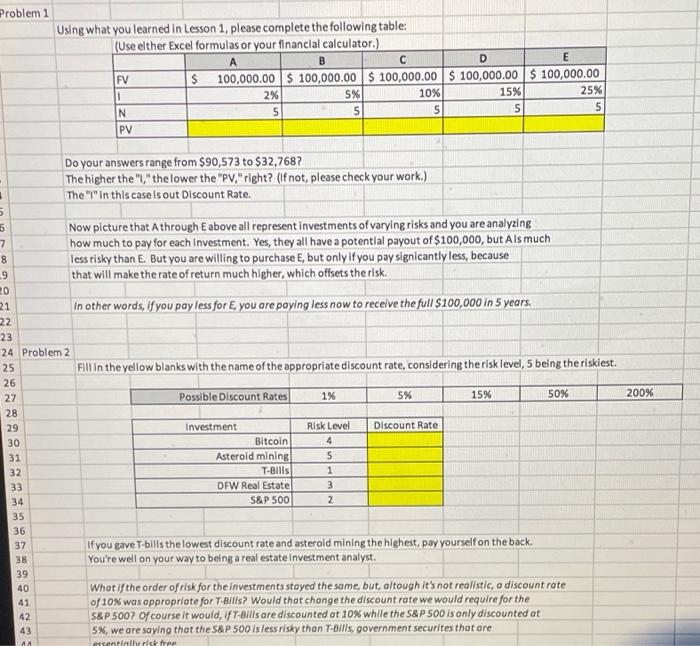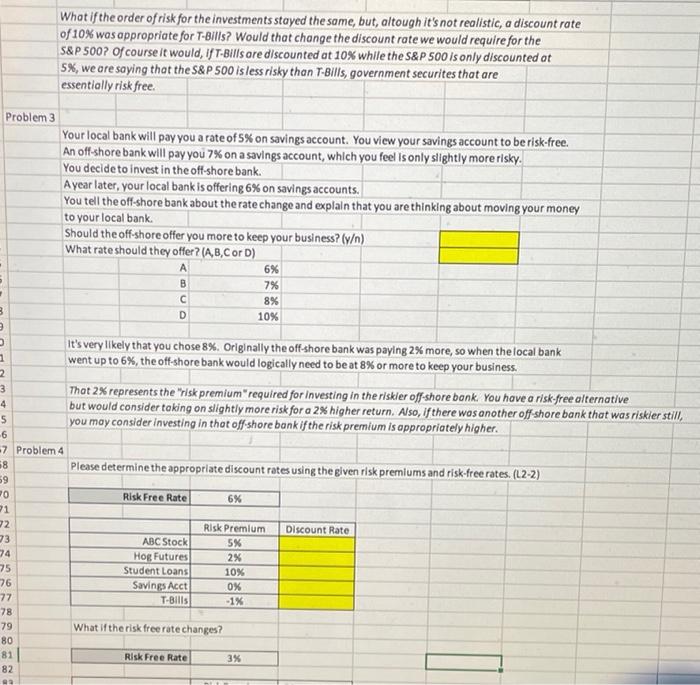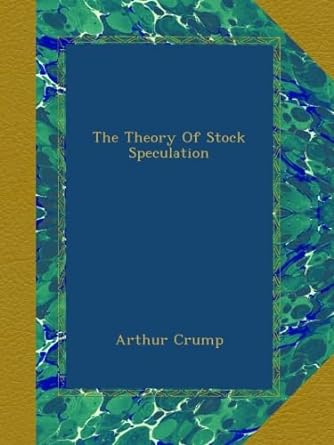Problem 1 Using what you learned in Lesson 1, please complete the following table: (Use elther Excel formulas or your financial calculator.) B D E FV $ 100,000.00 $ 100,000.00 $ 100,000.00 $ 100,000.00 $ 100,000.00 1 2% 5% 10% 15% 25% N 5 5 5 5 5 PV . Do your answers range from $90,573 to $32,768? The higher the","the lower the "PV,"right? (If not, please check your work.) The "In this case is out Discount Rate. Now picture that Athrough E above all represent investments of varying risks and you are analyzing how much to pay for each Investment. Yes, they all have a potential payout of $100,000, but Ais much less risky than E. But you are willing to purchase E, but only if you pay signicantly less, because that will make the rate of return much higher, which offsets the risk. In other words, if you pay less for E. you are paying less now to receive the full $100,000 in 5 years. Fill in the yellow blanks with the name of the appropriate discount rate, considering the risk level, 5 being the riskiest. Possible Discount Rates 1% 5% 15% 50% 200% 5 5 7 8 9 20 21 22 23 24 Problem 2 25 26 27 28 29 30 31 32 33 34 35 36 37 38 39 40 41 42 43 Discount Rate Investment Bitcoin Asteroid mining T-Bills DFW Real Estate S&P 500 Risk Level 4 5 1 3 2 If you gave T-bills the lowest discount rate and asteroid mining the highest pay yourself on the back. You're well on your way to being a real estate Investment analyst What if the order of risk for the investments stayed the same, but, a tough it's not realistic, a discount rate of 10% was appropriate for T-Bills? Would that change the discount rote we would require for the S&P 500? Of course it would, if T-Bills are discounted at 10% while the S&P 500 is only discounted or 5%, we are saying that the S&P 500 is less risky thon T-Bills, government securites that are sentinthyrist free MA What if the order of risk for the investments stayed the same, but, altough it's not realistic, a discount rate of 10% was appropriate for T-Bills? Would that change the discount rate we would require for the S&P 500? Of course it would, if T-Bills are discounted at 10% while the S&P 500 is only discounted at 5%, we are saying that the S&P 500 is less risky than T-Bills, government securites that are essentially risk free Problem 3 Your local bank will pay you a rate of 5% on savings account. You view your savings account to be risk-free. An off-shore bank will pay you 7% on a savings account, which you feel is only slightly more risky. You decide to invest in the off-shore bank. A year later, your local bank is offering 6% on savings accounts. You tell the off-shore bank about the rate change and explain that you are thinking about moving your money to your local bank. Should the off-shore offer you more to keep your business? (v) What rate should they offer? (A,B,C or D) 6% 7% A B B 8% 10% D It's very likely that you chose 8%. Originally the off-shore bank was paying 2% more, so when the local bank went up to 6%, the off-shore bank would logically need to be at 8% or more to keep your business. That 2% represents the "risk premium required for investing in the riskler off-shore bank. You have a risk-free alternative but would consider taking on slightly more risk for a 2% higher return. Also, if there was another offshore bank that was riskler still, you may consider investing in that offshore bank if the risk premium is appropriately higher. Please determine the appropriate discount rates using the given risk premiums and risk-free rates. (L2-2) Risk Free Rate 6% 2 3 4 5 -6 -7 Problem 4 58 59 20 71 72 73 74 75 76 77 78 79 80 81 82 29 Discount Rate ABC Stock Hog Futures Student Loans Savings Acct T-Bills Risk Premium 5% 2% 10% 0% -1% What if the risk free rate changes? Risk Free Rate 3% - Problem 4 Please determine the appropriate discount rates using the given risk premiums and risk-free rates. (L2-2) Risk Free Rate 6% Discount Rate ABC Stock Hog Futures Student Loans Savings Acct T-Bills Risk Premium 5% 2% 10% 0% -1% What if the risk free rate changes? Risk Free Rate 3% Discount Rate ABC Stock Hog Futures Student Loans Savings Acct T-Bills Risk Premium 5% 2% 10% 0% -1%









